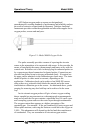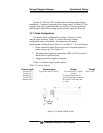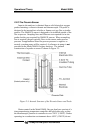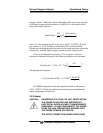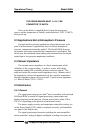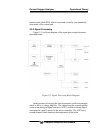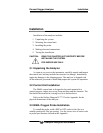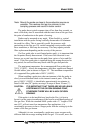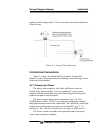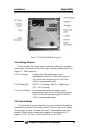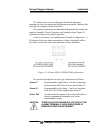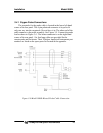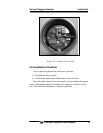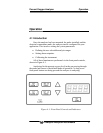
Installation Model 9060L
Teledyne Analytical Instruments 24
Note: Mount the probe as close to the combustion source as
possible. This reduces the lag time inherent in the
sampling process and results in better control.
The probe has a typical response time of less than four seconds, so
most of the delay time is associated with the transit time of the gas from
the point of combustion to the point of sensing.
Probes can be mounted at any angle. When feasible, a vertical
installation with the probe facing vertically downwards will eliminate
the need for a filter. This is especially useful for processes with
particulates in the flue gas. If a vertical mounting is not possible under
these conditions, a filter may be necessary. This may require periodic
filter replacement depending on the severity of the process.
If a flow guide tube is used (heated probes only), it is important that
the fin points directly downstream. If the exact flow direction is not
known, use a wind vane that can be made from a piece of wire and flat
metal. If the flow guide tube is installed facing the wrong direction for
any period, the suction filter may block with flue gas dust particles.
The maximum temperature for an unsupported flow guide tube is
750°C (1380°F). Above this temperature, provide a support and flanged
flexible rubber joint as shown in Figure 3-1. The maximum temperature
of a supported flow guide tube is 900°C (1650°F).
When installing a probe into a hot environment, slide the probe in
slowly to avoid thermal shock to the internal ceramic parts. If the flue
gas is 1000°C (1830°F), it should take approximately ten minutes to
install a 500 mm (20”) probe, moving it in steps of about 20 mm (1”).
CAUTION: IT IS IMPORTANT THAT THERE ARE NO AIR LEAKS
UPSTREAM OF THE OXYGEN SENSING POINT,
OTHERWISE THERE WILL BE A HIGH OXYGEN
READING.
If the probe is to be installed on a bend in the flue, it is best to
locate it on the outer circumference of the bend to avoid dead pockets of
flue gas flow. While the standard 9060L probe with a ‘U’ length of 250
mm (10”) will suit most low temperature flue applications, it is
occasionally necessary to have a longer probe with the sensing tip in the
center of the flue gas stream.
Although it is rare, occasionally a probe may sense oxygen vastly
different from the average reading in the flue gas. If it occurs, move the



